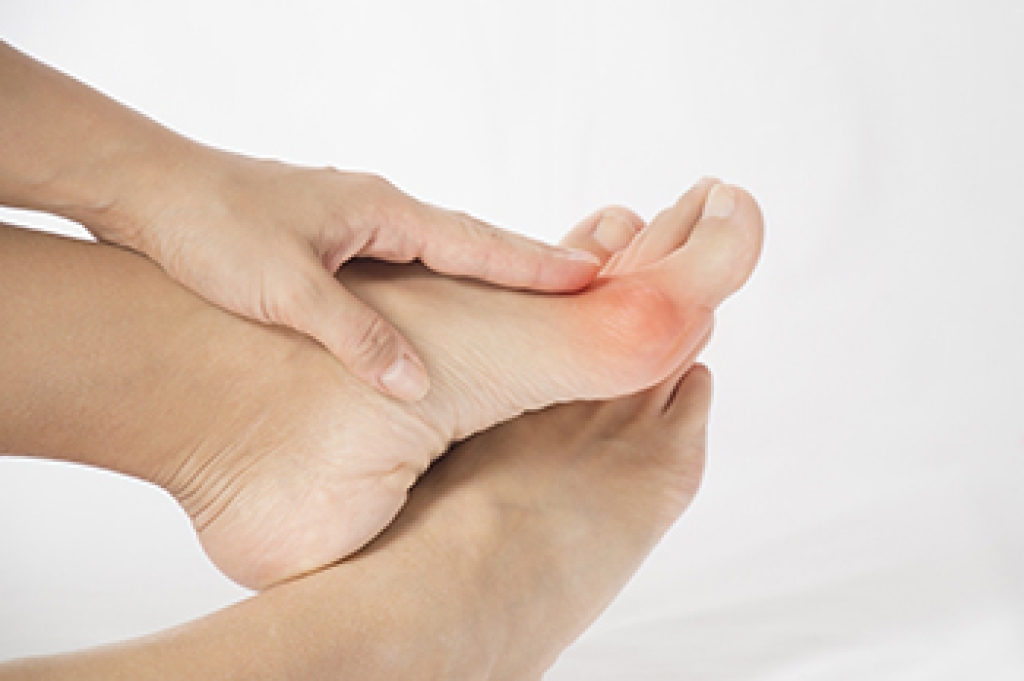
Bunions, a common foot condition, present noticeable symptoms that can affect daily life. One prominent indication is a bony bump that forms at the base of the big toe, causing it to lean inward toward the other toes. This misalignment often leads to pain, swelling, redness, and restricted movement in the affected area. As bunions progress, they can cause discomfort, making it challenging to find comfortable footwear and engage in regular activities. However, several strategies can help manage bunions and alleviate symptoms. Wearing shoes with a wide toe box can reduce pressure on the bunion and provide ample space for the toes. Engaging in gentle stretching exercises can help to relieve pain and inflammation. In severe cases, where conservative measures fail to provide relief, surgical intervention may be considered to correct the underlying structural deformity. If you have a bunion, it is suggested that you are under the care of a podiatrist who can monitor its progression, and offer effective management techniques.
If you are suffering from bunions, contact Dr. Yeon A. Shim of Roselle Podiatry Group. Our doctor can provide the care you need to keep you pain-free and on your feet.
What Is a Bunion?
A bunion is formed of swollen tissue or an enlargement of boney growth, usually located at the base joint of the toe that connects to the foot. The swelling occurs due to the bones in the big toe shifting inward, which impacts the other toes of the foot. This causes the area around the base of the big toe to become inflamed and painful.
Why Do Bunions Form?
Genetics – Susceptibility to bunions are often hereditary
Stress on the feet – Poorly fitted and uncomfortable footwear that places stress on feet, such as heels, can worsen existing bunions
How Are Bunions Diagnosed?
Doctors often perform two tests – blood tests and x-rays – when trying to diagnose bunions, especially in the early stages of development. Blood tests help determine if the foot pain is being caused by something else, such as arthritis, while x-rays provide a clear picture of your bone structure to your doctor.
How Are Bunions Treated?
- Refrain from wearing heels or similar shoes that cause discomfort
- Select wider shoes that can provide more comfort and reduce pain
- Anti-inflammatory and pain management drugs
- Orthotics or foot inserts
- Surgery
If you have any questions, please feel free to contact our office located in Roselle, NJ . We offer the newest diagnostic and treatment technologies for all your foot care needs.

